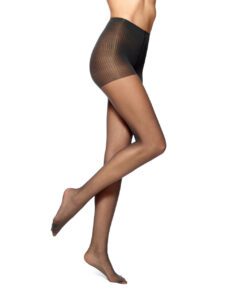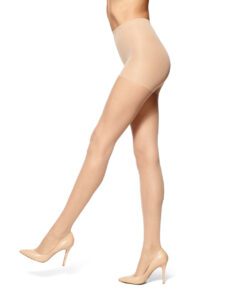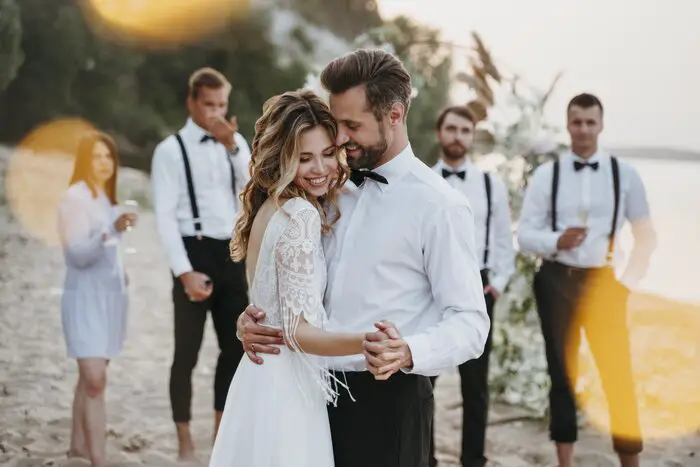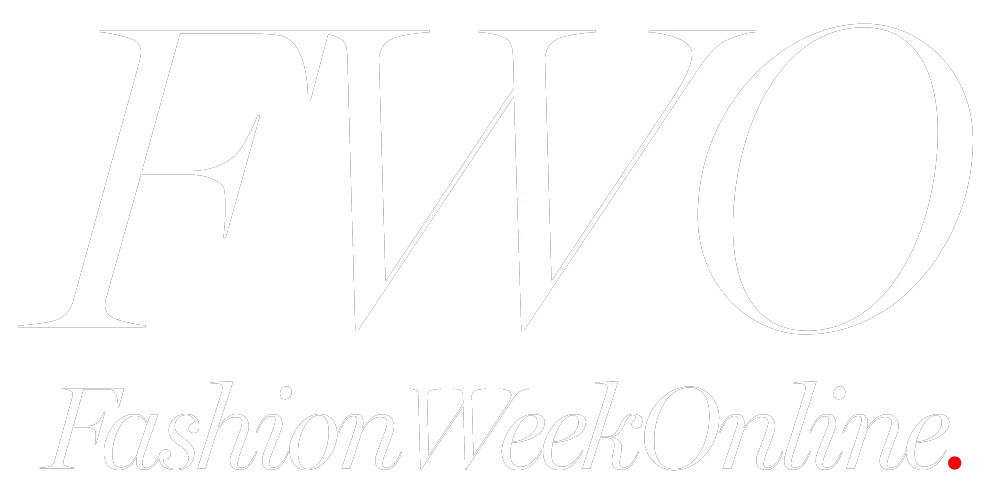Here’s What to Wear to These 8 Different Occasions
Last Updated: April 9, 2025
See an error? Send story corrections here.
Planning your next outfit for an important occasion can be both exciting and challenging. Whether you have upcoming formal events or casual gatherings, knowing how to dress appropriately can help you feel confident and make a positive impression. But do you understand the nuances between different dress codes, and can your current wardrobe meet these varying demands?
We’ve created this comprehensive guide to help you navigate the sartorial requirements of various social situations. Looking to also get your grooming routine in check? Click here to get started. Here’s how to dress impeccably for eight different types of occasions:
Weddings
The perfect wedding attire depends entirely on the specified dress code. For formal or black-tie weddings, women should opt for elegant floor-length gowns or sophisticated A-line dresses in rich fabrics like silk, satin, or chiffon.

For cocktail attire weddings, a knee-length dress in a luxurious fabric paired with refined accessories creates an elegant look. The classic little black dress remains a versatile option that respects the cardinal rule of wedding etiquette: never wear white, which is reserved exclusively for the bride.
If dresses aren’t your preference, consider pairing a well-tailored knee-length or A-line skirt with an elevated top. Black or neutral skirts complement sequined or satin blouses beautifully, while patterned skirts pair well with solid, light-colored tops. Always avoid casual fabrics like jersey, chino, and denim, which can appear underdressed for the occasion.
Accessories can transform your wedding guest ensemble. Fine jewelry, including tasteful rings, can elevate your look significantly. For those in Toronto seeking perfect engagement rings (perhaps for your own upcoming nuptials), specialty jewelers offer curated selections to complement any wedding attire.
Holiday Parties
The festive season brings multiple celebrations from December through early January, requiring a versatile holiday wardrobe. Fortunately, these occasions allow for more creative expression through color, texture, and style.
For corporate holiday gatherings, consider a jewel-toned dress that strikes the perfect balance between festive and professional. Reserve more statement-making pieces—like sequined dresses or velvet jumpsuits—for celebrations with friends and family.
When selecting your holiday party attire, consider both style and practicality. Winter temperatures call for layering options like elegant wraps, tailored blazers, or sophisticated coats. A well-cut jumpsuit or tailored suit in traditional holiday colors (emerald green, deep red, or midnight blue) offers both warmth and style.
Embrace the festive spirit with thoughtfully chosen accessories—statement earrings, layered necklaces, or embellishments like subtle sequins or metallic threading can transform even simple outfits into celebration-worthy ensembles.
Work Conferences, Training Events, or Workshops
Professional events require attire that projects competence and credibility while representing your organization positively. Industry standards vary, but polished presentation remains universally important.
In traditional corporate environments, a well-tailored suit in neutral tones (black, navy, charcoal, or camel) creates an authoritative yet approachable impression. If suits aren’t your preference or budget, a structured dress in a modest silhouette and conservative color achieves similar professionalism.
For creative industries like design, fashion, or media, you have more flexibility to showcase your personal style while maintaining professionalism. Consider elevated basics with artistic touches or contemporary silhouettes that demonstrate both fashion awareness and business appropriateness.
Remember that professional events often involve long days of networking, presentations, and movement between venues. Choose comfortable footwear and clothing that will look crisp from morning sessions through evening receptions.
A Work Party or Business Dinner
Work-related social events require navigating the balance between professional appearance and appropriate festivity. Your industry’s culture should guide your choices.
In conservative industries like finance, legal, or certain corporate environments, maintain formality with refined dresses, tailored separates, or elegant pantsuits. Opt for high-quality fabrics in sophisticated cuts, keeping accessories minimal and refined.

Progressive industries allow more creative expression. Tech, media, or creative field professionals can incorporate current trends, interesting silhouettes, or statement pieces while maintaining an overall polished appearance.
For client dinners or meetings with executives, err on the side of formality. Choose attire that commands respect and projects capability—this isn’t the occasion for distracting or overly casual pieces.
A Baby or Bridal Shower
Celebration showers strike a balance between festivity and function. These daytime events typically call for attire that’s feminine and celebratory while allowing comfortable movement for mingling and participation in shower activities.
For spring or summer showers, consider floral dresses, pastel separates, or elegant jumpsuits in lightweight fabrics. Fall and winter celebrations call for refined knits, wool blend dresses, or sophisticated trousers paired with embellished tops.
Choose footwear that prioritizes comfort—refined flats, low block heels, or dressy wedges allow you to stand comfortably through gift-opening ceremonies and mingling. Delicate jewelry and subtle embellishments complement the joyful nature of these events without overwhelming your look.
A Graduation
Graduation ceremonies honor academic achievement with dignified celebration. Whether you’re the graduate or attending in support, attire should respect the milestone’s significance.
Graduates should select attire that feels special yet practical, considering the gown that will be worn over it. A knee-length dress in a meaningful color or with subtle patterns creates a timeless look you’ll appreciate in photographs for years to come. Pair with comfortable yet refined footwear that allows confident stage walking.
Guests should opt for smart-casual attire that acknowledges the ceremony’s importance—sundresses, tailored separates, or refined jumpsuits in cheerful colors are all appropriate choices. Consider venue conditions (outdoor ceremonies may require sun protection or temperature-appropriate layers) when finalizing your outfit.
A Funeral or Wake
Moments of mourning call for attire that expresses respect through restraint and modesty. Traditional funeral attire centers on dark, subdued colors—primarily black, though deep navy, charcoal gray, or dark brown are generally acceptable alternatives.
A knee-length dress with a cardigan or blazer provides appropriate coverage, as does a conservative pantsuit or skirt with a simple blouse. Avoid flashy elements, revealing cuts, or casual fabrics that could distract from the solemn occasion.
Accessories should remain minimal and understated—simple pearl earrings, a delicate necklace, or a modest watch add refinement without drawing attention. Comfortable yet formal footwear in dark colors completes this respectful ensemble.
A Baptism or Other Religious Ceremonies
Religious ceremonies often have specific dress expectations based on tradition and reverence. Research or inquire about particular requirements for the faith tradition you’ll be honoring with your presence.
Most religious settings appreciate modest attire that doesn’t distract from sacred proceedings. For women, this typically means covered shoulders, limited décolletage, and hemlines at or below the knee. A dress with a cardigan or jacket, a modest skirt with a refined blouse, or elegant trousers with a conservative top generally meets these expectations.
Some traditions may have specific requirements—certain Orthodox services might request head coverings for women, while other faiths may have color conventions or modesty standards. When uncertain, consulting the hosts or other practitioners shows respect for the tradition.
When selecting your outfit for any occasion, consider three key factors: the event’s purpose, any explicit dress codes, and your personal comfort. With these elements in mind, you can create appropriate ensembles from your existing wardrobe by focusing on suitable colors, fabrics, and silhouettes.
While following guidelines demonstrates respect for the occasion, don’t be afraid to incorporate elements of your personal style when appropriate. Above all, choose attire that allows you to feel confident and present—when you’re comfortable in your clothing, you can fully engage with the experience rather than worrying about your appearance.
##
With love,
FWO






